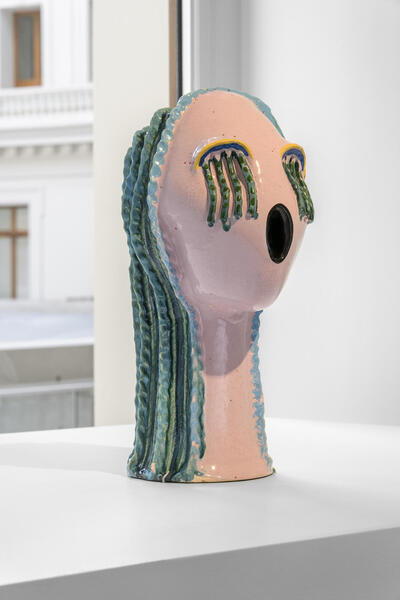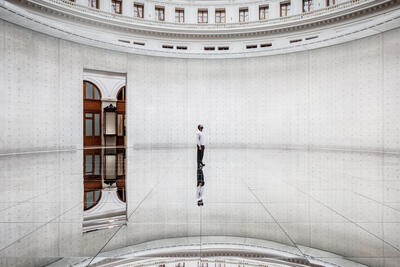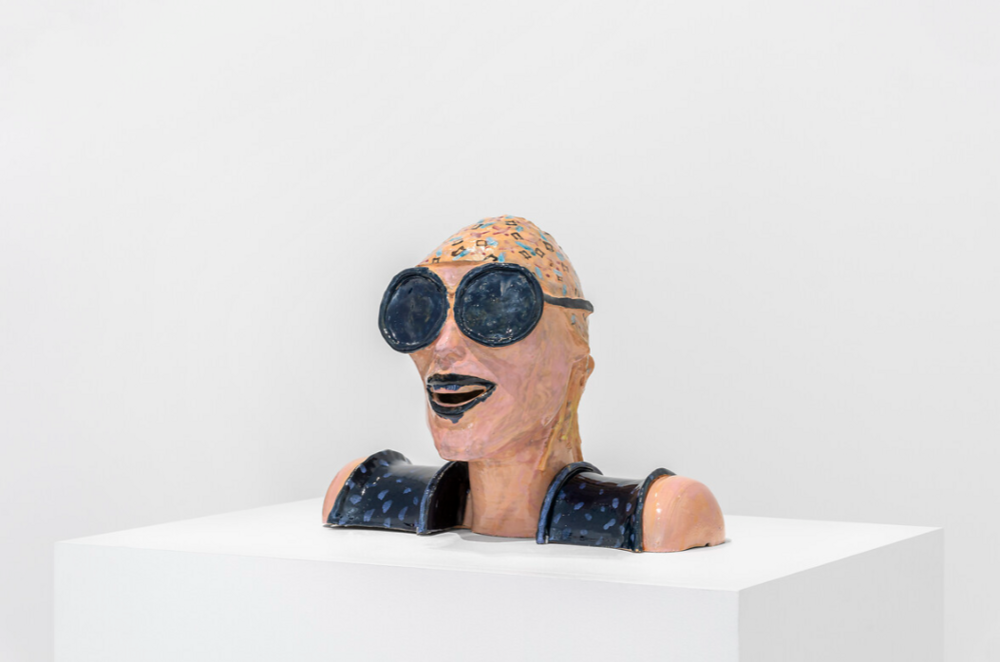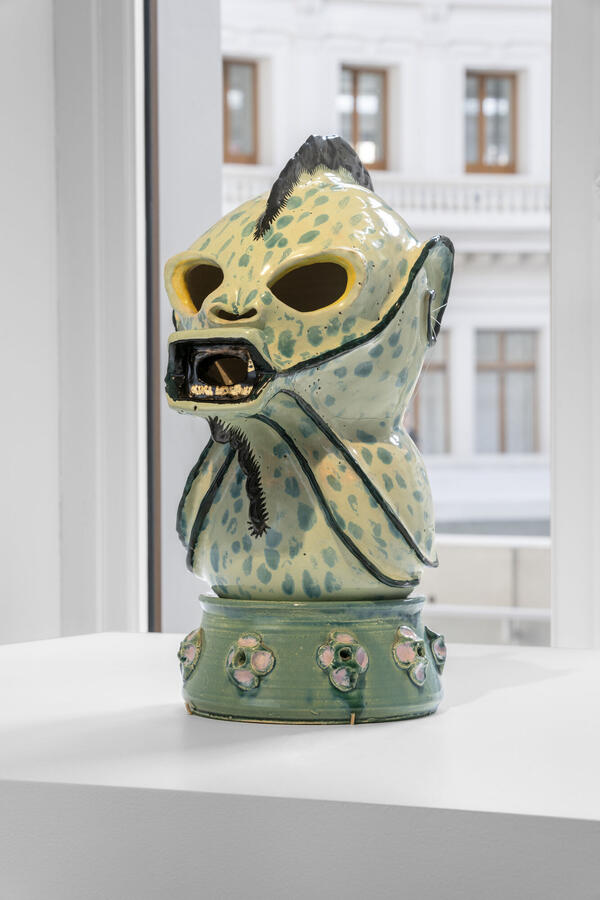Sleepy Head
Glazed ceramic
17 1/8 × 6 11/16 × 9 13/16 in
The space race and the Cold War had a deep impact on Kiki Kogelnik’s imagination and artmaking, which she defined as “space art”. Kogelnik used various media to explore technology’s ability to overturn the women’s bodies and identities. She adopted a feminist, scientific perspective to look at the mutability of gender roles.
Kiki Kogelnik began making ceramics in the early 1970s, creating a series of bulbous heads that complemented the cosmic universe of her paintings of that same time, in which the bodies of women-robots and extra-terrestrial beings float freely. Sleepy Head can be considered a self-portrait, as it exhibits the distinctive eye makeup that Kogelnik wore in the 1960s: exaggerated green eyelashes that appear to run down her cheeks. The sculpture’s mouth forms an open, black orifice that is both suggestive and comical, while the blue and green braided hair falls from a large opening in the back of the head all the way to the base of the sculpture. The cyborg aesthetic of this sleeping head melds with the archaic form of the figures made by the ceramicist Vally Wieselthier (1895-1945), whom Kogelnik collected. Kogelnik described her heads as “beautiful, rich, mundane, superficial, bored, neither happy nor sad, without any deep thoughts, feelings, or emotions ”.
The Pinault Collection first showed this work in 2023 at the Couvent des Jacobins in Rennes, as part of the exhibition Forever Sixties.

Vue de l’exposition « Le monde comme il va », Bourse de Commerce – Pinault Collection, Paris, 2024.
© Tadao Ando Architect & Associates, Niney et Marca Architectes, agence Pierre-Antoine Gatier.
Photo : Nicolas Brasseur / Pinault Collection.




